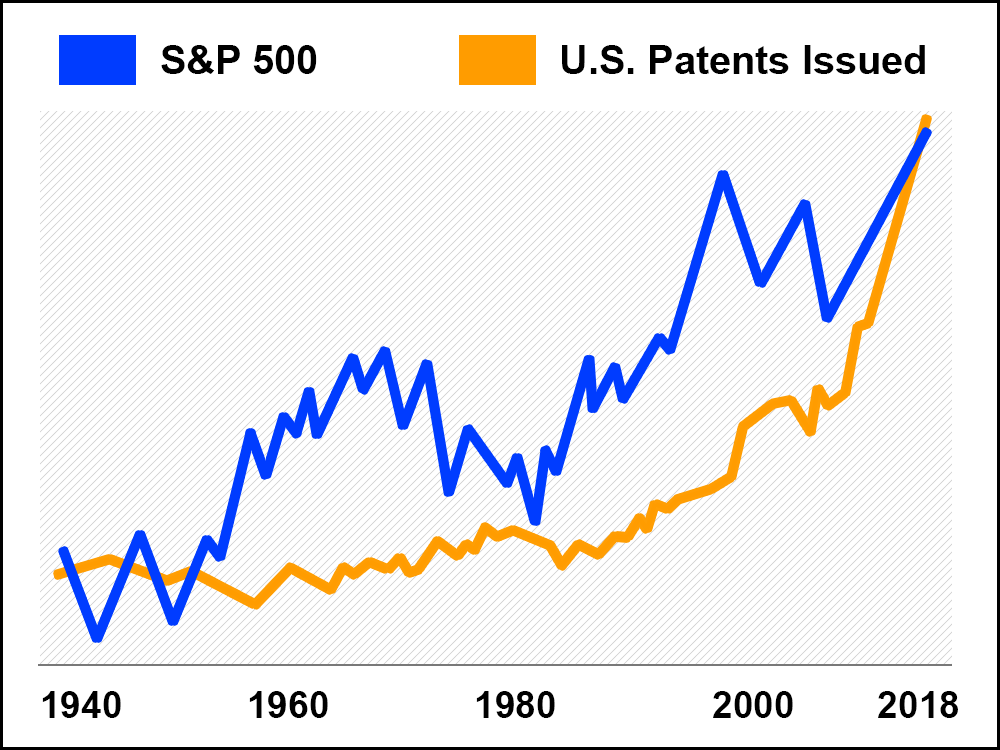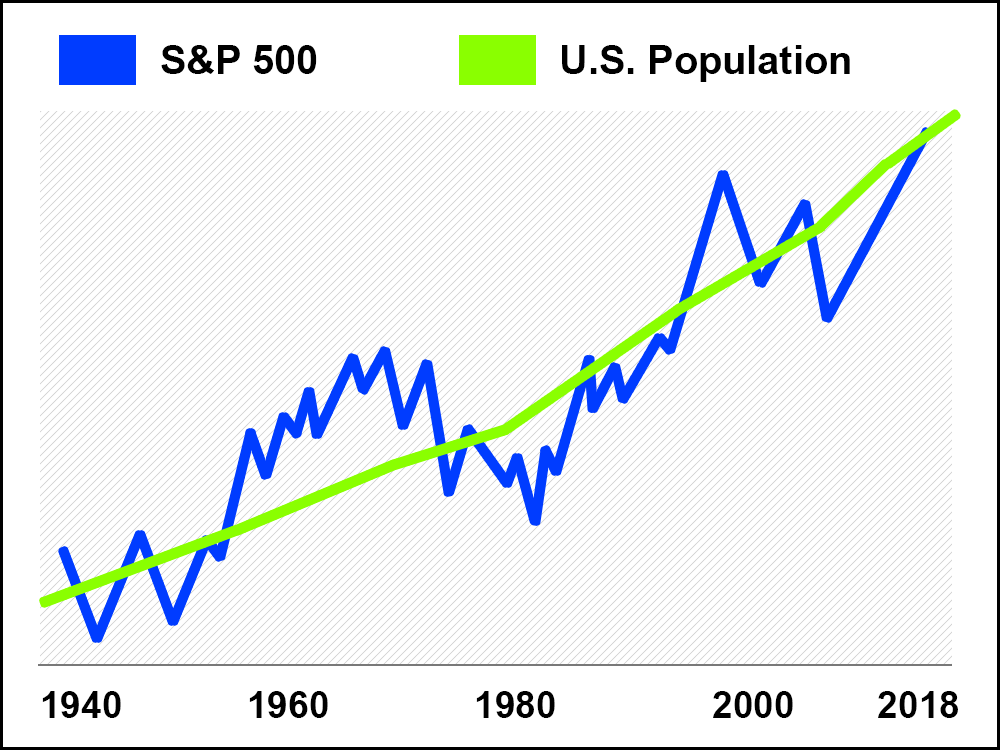A question I commonly hear from first-time investors is…
“Why does the stock market always go up long-term?”
Over the past 90 years, the Standard & Poor’s 500 index has returned an average of 9.8% per year – causing many investors to just park their cash in an index fund. This way, they can watch their money grow slowly, almost entirely hands-free.
Of course, there are people on the other side of the coin who beat the S&P 500’s yearly return with regularity. These people, armed with robust trading methods that identify the very best trades, navigate in and out of the market with great alacrity. Instead of watching from a distance, these investors (known as traders) prefer direct control over their portfolio.
But excluding those types of people, the S&P 500’s relatively consistent yearly growth is enough for many – even though they’re leaving heaps of money on the table by taking a backseat role in investing.
Even though almost all investors accept that the stock market’s steady growth is a universal law of finance, I’m still surprised at the number of people who don’t understand why the S&P continues to march upwards at a steady pace.
There is a reasonably complex explanation as to why this happens, so I’m going to break it down into its base components – allowing us to examine the multitude of reasons the stock market goes up (almost) every year. I’m going to exclude inflation for now – as I don’t want to give the government any reason to continue printing money at breakneck speeds.
1. Advances in Technology
For many armchair economists, this is routinely the “go-to” reason for the stock market’s long-term growth.
Many experts agree that technological process can be tracked by the number of new patents issued each year. As more patents are granted per year, technological enrichment typically follows.
Here’s a chart plotting the S&P 500 alongside the number of U.S. patents issued, since 1940:

As you can see, there’s a strong correlation between the S&P and the number of patents issued. This is by no means proof that an increase in patents will cause the stock market to rise, nor that a “down year” for patents will cause the S&P to drop. We also have to consider whether or not the market’s movement is affecting the number of patents issued – which would mean that the S&P 500’s growth actually determines technological progress.
Either way, the two indexes seem to be somewhat related – and movement in one could cause a similar reaction in the other – meaning it’s highly likely that advancements in technology are contributing (in some way) to the stock market’s consistent growth.
2. Higher Productivity
Productivity and technology seemingly go hand-in-hand, so this one’s kind of a no-brainer but I wanted to talk about it briefly anyway. As technology continues to improve, so does productivity.
Life before significant tech advances was pretty grim, and humans were extremely inefficient creatures – doomed to complete menial tasks repeatedly (the work that machines do for us now) for hundreds of years.
When technological progress finally began to take off, countries around the world started to produce much higher GDPs without any additional growth in the number of labor hours worked by their people. Mankind became exponentially more efficient in a short period of time, and we’re still doing so at an ever-hastening pace.
So, as technology improves, so will productivity, which will add more value to the market over time – causing it to continue to rise.
3. Population Increases
The more people there are, the more consumers there are to buy things from businesses. It’s a simple fact – corporations are more valuable if they have more people to sell to.
Here’s a chart plotting the population of the United States alongside the S&P 500 since 1940:

Again, we have another strong correlation between the two indexes.
Just like with the last two variables, population is likely a major factor that determines technological advances and productivity. They are all undoubtedly related, and as productivity rises along with population, you get a “double-whammy” of added value to the market.
4. A Strict Selection Process
The last primary reason for the S&P 500’s long-term growth is Standard & Poor’s rigorous selection process.
If companies in the index aren’t up to snuff, Standard & Poor’s will replace them in an instant – removing underperformers in favor of more “financially viable” companies.
Since the 60’s, they’ve already done this over 1,000 times – trimming the fat off the market, keeping it lean and mean. This is a less critical factor in deciding the market’s long-term performance, but it should absolutely still be recognized when evaluating why the S&P 500 has risen an average of 9.8% per year over the course of nine decades.
So, What Does That All Mean?
This means that while technological advances may seem to be driving the market upwards single-handedly, population growth and increases in productivity are large contributors as well (and most likely related to one another) – aided by Standard & Poor’s strict admission criteria.
Even though the market chugs along each year at a slow pace, somewhat consistently, investors around the world make a choice every day to do better – to outperform the S&P 500’s 9.8%, which is easily achievable in a handful of profitable trades.
Thousands of our own members have taken that first bold step towards that, by equipping themselves with one of our robust, time-tested trading methods.
If you’re happy with watching and waiting as the market passes you by, that’s fine. Just know that you’ll be leaving a treasure trove of potential profits on the table.
I certainly wouldn’t want that.
Would you?








